Why Do Plesiosaurs Have Long Necks?
Posted by: Loren Coleman on September 2nd, 2009
This week, I listened to a podcast on plesiosaurs with Dr. Adam Stuart Smith (above) of Dublin’s National Museum of Ireland, Natural History Division.
(Be forewarned, it isn’t Smith’s fault that his hosts use a complete disregard for most of the evidence, including critical dates, found within the Nessies dossier to make their debunking points. MonsterTalk, the cleverly misnamed, new site for this podcast series, is a stalking horse for CSICOP.org, the Skeptical Inquirer, and a variety of other debunking alliances. It is produced, clearly, with a point of view in place, and must be realized for that bias. I counted too many factual errors and spiteful comments to detail or reply to here, within their painfully long intro section. Skip the first 20 minutes and go straight to Smith’s down-to-earth presentation.)
Smith alerted me to several items of interest and discussions that he mentions on his excellent website, which has a variety of links to his papers and talks. The site also demonstrates we share, along with Dr. Darren Naish, a popular culture interest in the use of replicas in our research and educational pursuits.
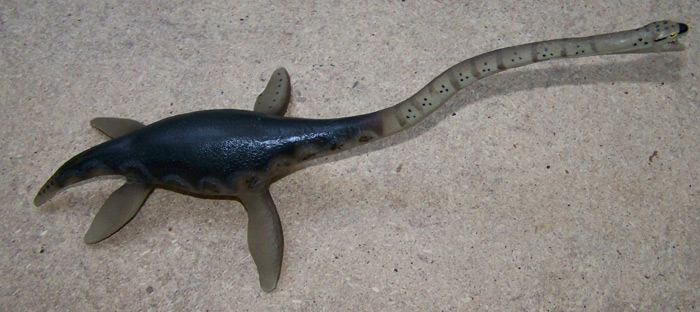
This plesiosaur shown is a member of Order Plesiosauria as a whole, and belongs to the long-necked Suborder Plesiosauroidea. It is the topic under consideration. Dr. Adam Stuart Smith photo.
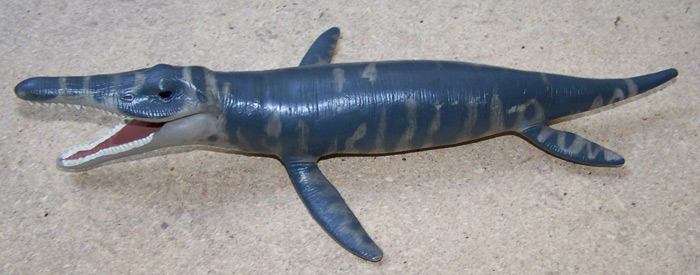
This pliosaur, above, is also a member of Plesiosauria, within the Suborder Pliosauroidea, but not the subject of the day. Dr. Adam Stuart Smith photo.
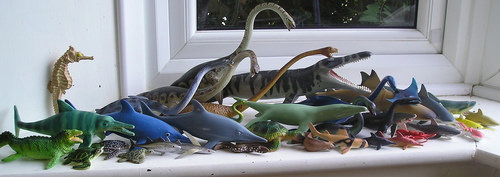
Part of Dr. Darren Naish’s collection.
Nessies Are Not Plesiosaurs
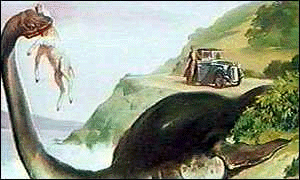
Nessies are not plesiosaurs, despite what sinister artists would have you think.
One point, of course, is that scientists like Dr. Smith and Dr. Naish are still called upon by the debunkers to say all the right things about how the Loch Ness Monster is not a pleisosaur. The Plesiosaur Hypothesis is certainly not an overwhelming concern within cryptozoology, nor is the notion that there’s “one Jurassic Park-type survivor” in that loch. Cryptozoologists have no argument with Smith’s conclusions and Naish’s thoughts on such matters.
Intriguingly, the Plesiosaur Hypothesis is one developed early in the British media promotion of theories to explain reports of unknown animals in Loch Ness in the 1930s.
Most American cryptozoologists, from the beginning, and, indeed, most critical thinking cryptozoologists today reject The Plesiosaur Hypothesis. The mammalian focus and other schools of thought have won out long ago. We realize that these extinct marine reptiles are extinct, and to promote or use them as candidates for Loch Monsters is done mostly by “true believers” (on both sides of the aisle, whether they are pro- or anti-Nessites).
Most cryptozoologists would whole-heartedly agree with Smith’s statements on his website, like this one: “There is no scientific evidence supporting the existence of long-necked plesiosaurs living today and no evidence whatsoever for short-necked plesiosaurs living today.”
As he points out, for example, plesiosaurs did not even have swam-like necks. As Smith observes: “Contrary to early work (Zarnik, 1925, see figure below), the neck did not have the flexibility to coil up and strike prey as do some snakes and pleurodiran turtles (Pough et al. 1996). The neck was actually inflexible (Storrs, 1993), so plesiosaurs could also not adopt the often depicted swan-like pose.”
Various theories by cryptozoologists encompass folkloric traditions, skeptical insights, misidentified pinnipeds and other animals, and the exploration of the survival of varied fossil and extant but undiscovered mammalian forms.
The “Surgeon’s Photo” (two, not one image, btw) has not been held in high regard by mainstream cryptozoologists for decades (as it appeared to be a diving bird or otter). Nevertheless, the legend of the hoax claim is a remarkable story unto itself. The “deadbed confession” did not occur; a tale was told and two years later the man who told it died. The media and the Internet has carried forth the myth of the “deathbed confession.” The materials said to have constructed the alleged but unproven “toy submarine” model were not yet invented and/or in widespread use in 1934.
The alternatives to the The Plesiosaur Hypothesis are just as dynamic and interesting.
Dr. Darren Naish’s paper on crypto-pinnipeds is a landmark contribution in which he has examined the evidence and ventured forth with some challenging insights, for all of us.
Even on a public forum, Dr. Smith noted his open-mindedness and sense of adventure is still alive: “I never mentioned it in the interview, although I wish I had, that despite the lack of convincing scientific evidence for living plesiosaurs, I’d naturally love for a living plesio or two to be discovered. Wouldn’t that be wonderful! There is nothing intrinsically ridiculous about the idea of plesiosaurs surviving to the present day, there just isn’t any scientific evidence for it.”
What Smith does also point out is that there are plenty of unanswered questions about plesiosaurs without dragging poor ole Nessies into the picture.
Why Plesiosaurs Have Long Necks
One ongoing mystery that Smith did allow to surface (pun intended) interested me, and I’d like to propose a solution. For a very successful group of marine reptiles, which lived for 180 million years in various forms, Smith points out that among the plesiosaurs (versus the pliosaurs), their necks increasingly lengthened. But no one knows why.
I notice there is an apparent continued exploration of sexual selection and food adaptations as reasons for the longer and longer necks of plesiosaurs. But I wondered if anyone has thought about or written about another factor of some importance: oxygen? (I’m out of my field of expertise here, so this idea may be already thoroughly explored in the literature, although I couldn’t find anything quickly about it.)
Dr. Smith mentions that the fossils of plesiosaurs are found in areas indicating the animals would have lived in silt-filled water, probably gave birth via living young (not eggs), and were a very successful group of species. He also noted the curious fact of the extreme vulnerability of their long necks.
All this makes me wonder, why evolve a longer and longer neck? There must have been positive reinforcement in terms of survival in having an increasingly longer neck. I pondered, could there be an evolutionary advantage to utilizing shoreline peat-filled and dark-silt waters to hide your long neck, while using and then sticking those long rigid necks just barely up to the surface, only to breathe?
Longer and longer necks could have served the purpose of the heavily weighted down plesiosaurs, with all those stones in their stomachs (gastroliths, above), hanging out at or near the murky, safe shoreline bottoms, in darker, more hidden waters, while, oh, so carefully breaking the surface of the water to breathe.
Growing up in central Illinois, I would often wade deeply into muddy creeks and encounter soft-shelled turtles, by surprise. (Those I could manage; it was the snapping turtles that I had to really avoid.) Despite their relatively large size, these soft-shelled turtles would keep well hidden below the water and merely place the tip of their noses on the surface – after stretching their necks out as long as possible – to breathe. (See image above.)
Also, soft morphology does not show it perhaps, but maybe, like the soft-shelled turtles, the plesiosaurs had nostrils that assisted in this breathing task. Most soft-shell turtles, no matter where they are found in the world, use their long necks in conjunction with their specialized noses. (See above and below.)
After thinking about Dr. Smith’s interview, I wondered, could this be exactly what is occurring with the plesiosaurs? They needed to breathe but they also had to keep their necks protected/hidden from harm.
As opposed to the Nessie-like necks that we both agree the earlier theorists mistakenly proposed for the plesiosaurs, maybe the opposite was occurring. Around the world, no “long necks” were projecting from the marine environment, but lots of little noses were popping up, to breathe safely.
About Loren Coleman
Loren Coleman is one of the world’s leading cryptozoologists, some say “the” leading living cryptozoologist. Certainly, he is acknowledged as the current living American researcher and writer who has most popularized cryptozoology in the late 20th and early 21st centuries.
Starting his fieldwork and investigations in 1960, after traveling and trekking extensively in pursuit of cryptozoological mysteries, Coleman began writing to share his experiences in 1969. An honorary member of Ivan T. Sanderson’s Society for the Investigation of the Unexplained in the 1970s, Coleman has been bestowed with similar honorary memberships of the North Idaho College Cryptozoology Club in 1983, and in subsequent years, that of the British Columbia Scientific Cryptozoology Club, CryptoSafari International, and other international organizations. He was also a Life Member and Benefactor of the International Society of Cryptozoology (now-defunct).
Loren Coleman’s daily blog, as a member of the Cryptomundo Team, served as an ongoing avenue of communication for the ever-growing body of cryptozoo news from 2005 through 2013. He returned as an infrequent contributor beginning Halloween week of 2015.
Coleman is the founder in 2003, and current director of the International Cryptozoology Museum in Portland, Maine.

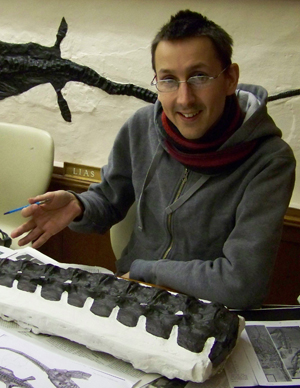


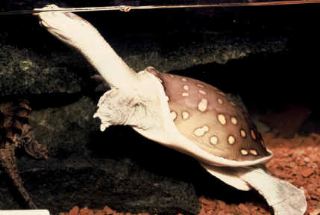
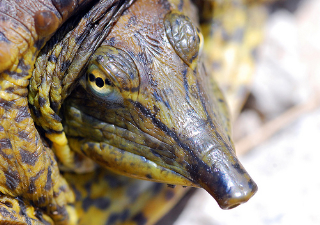










I saw a television program some time ago (Discovery Channel?) that suggested the long neck may have been an adaptation for more efficient hunting. The plesiosaur would follow behind a school of fish just out of sight. It would use the long neck to get its head into the school without causing a panic (maybe the head was assumed to be just a schoolmate), surreptitiously grab a fish, and then withdraw with no fish the wiser. Given the inflexibility of the neck it couldn’t have been used for quick strikes, but using it as a means of infiltration makes sense.
While the prehistoric survivor theory in general is exciting and may apply to some cryptids, it was never really a great fit for lake monsters. There were just too many hurdles a plesiosaur would have to overcome in order to fit the profile. A mammal of some kind, however, makes a lot of sense.
Many cryptozoology enthusiasts have been saying this for years, so it’s interesting to see CSICOP and the professional cynics so married to the plesiosaur theory. It really makes perfect sense. Cherry pick the most vulnerable theory and use it to debunk lake and sea monsters generally. A deceptive and entirely unscientific approach.
I recall the same show, the idea was that the large body of the plesiosaur would create to much disturbance for it to get close enough, so they had the long necks and small head that would be closer to their prey and could snatch them before the body was close enough to be detected.
Yes, Dr. Smith mentions that theory and even the documentary’s rendering of it. But that’s the “food adaptation” thesis I alluded to above.
In that scenario, it does not include a thought counter to the fact that between the body and the school of fish, the long (and the ever growing longer) neck would be very vulnerable. My theory takes into account what is hiding the neck and why it because important to grow it longer (to get to the surface for air), in addition to the hunting uses too.
I’ve seen plenty of long-neck turtles and if they breath in that manner, why not a plesiosaur.
The only concern would be water pressure on the body cavity preventing inhalation. I don’t believe the neck would be any longer then what it would need to be in order to be useful. If a plesiosaur is sitting on the bottom of a lakeshore, in 15 ft of water and it raises its head to breath, there is 15 ft of water pressure on its body cavity. Might make it rather hard to breath. Of course, maybe the rib cage had sufficient structure to prevent a collapse, don’t know.
A giraffe has a long neck. Used for foraging and seeing dangers from afar. It makes sense to me that, a plesiosaur would have similar reasons for the length of theirs; including the need for air.
One question arises in my mind with regard to the food adaptation. It makes perfect sense that prey which would be alerted by the pressure wave ahead of the predator’s body might be grabbed more easily if there’s just a small head on a slender neck reaching forward. Also, it makes sense to be able to grab fish as they scatter, or from different angles – the neck had at least some mobility. But why didn’t cetaceans or predatory fish like sharks go in the same direction?
Seals and sea lions have longer, more flexible necks which are helpful in catching fish, and at least one extinct seal had a genuinely long neck. The fish-eating cetaceans went the other way, streamlining and speeding up the body. It still seems odd, though, that no neck longer than the beluga’s ever appeared in cetaceans once they got past the Basilosaurus aprpoach of elongating the body. Perhaps sonar, which requires a large head, appeared early enough in cetacean evolution to preclude going in the long-necked direction.
Why did we never have anything resembling a long-necked shark? Would the advantage of the neck in catching fish be canceled out by the increased vulnerability?
Just pondering….
As a biologist and paleontologist, I can certainly rule out the idea that the longs necks were to allow them to sit on the bottom and breath. I hunt them, and other marine fossils, in the cretaceous chalk of Western Kansas, and my uncle and have found a number of them, both in the chalk and in the shale that sits on top of it. These critters would have lived in the middle of the inland sea that is estimated to be around 200 – 300 foot deep. That’s a long neck indeed!. Don’t forget, there are also short neck pleisiosaurs, i.e. Dolichorhyncops.
A few comments:
1) If you skip the first 20 minutes you miss “me” so I wouldn’t do that.
2) We are not a “stalking horse” for CSICOP anymore than cryptomundo is a puppet of “big credulity”. I think we both enjoy examining monster claims but MonsterTalk.org is admittedly a show put on by skeptics. I’m the producer of the show and I have a day-job and have no skeptic-based income except for the $0.42 I earned so far at examiner.com.
3) This episode is sub-titled “The Plesiosaur Hypothesis” because that’s the claim we’re addressing. I may try to get Naish on in a future episode if we can line things up, but our next episode is about Pterosaurs and – barring scheduling issues.
The goal I have for the show is to use Monsters as a launch point for scientists to tell us what they’re working on and what science can definitively tell us about monster-claims. For example in this episode we learn that science can tell us we haven’t found any Plesiosaur remains, that the creatures described in Loch Ness don’t behave the way Plesiosaurs would behave, etc…
While many serious cryptozoologists would admit that this is a dead hypothesis, there is a contention of young-earth creationists who think that the Plesiosaur-hypothesis is (a) valid and (b) going to falsify the theory of evolution. I feel it is important to show what the hard evidence says about that, even if the people making such a claim are using faith rather than facts to promote their position.
Hopefully some of your readers will give us a listen. We’ll continue to try and bring insight into what the science says – even if you have to skip the banter at the beginning of the show. Would it help if I put the break-point in the show-notes so those who want to miss our chatter can skip to the guest?
Of course then you’d miss the hilarious death-worm/Dune joke from Episode #003…
Insanity wrote “If a plesiosaur is sitting on the bottom of a lakeshore, in 15 ft of water and it raises its head to breath, there is 15 ft of water pressure on its body cavity. Might make it rather hard to breath.”
Good point; I don’t know the typical lung volume of elasmosaurs, but I read an estimate somewhere that they might have weighed 3800 kg. If the ratio of lung volume to body volume is the ~10% typical of modern crocodilians, then lungs containing 380 litres of air would have a surface area of at least 2.5 m^2, and down at 15 ft, say 0.5 Bar, the water would be squeezing those lungs with a total force of over 12 tons.
A problem for the snorkel neck theory, perhaps?
BTW, I bet Dr. Naish has great fun at bath time.
It’s because the Plesiosaur Child went down to the great gray-green Tethys Sea, all set about with fever trees, to ask the Mososaur what he has for breakfast.
plesiosaurs are said to have been extinct for 65million years if a small population survived and lived this whole time undetected don’t you think they could have simply evolved and developed a more flexible neck. I mean theres been plenty time to change . I can gaurantee no one agrees with me but to me at least it seems slighlty possible.
BunniesLair:
You made a very thought-provoking point. That’s my personal opinion, of course—but at least I MYSELF found it interesting.
Thanks.
Thanks also for your expert opinion, Gwfami.
And thanks also for DoctorAtlantis for “responding” to some of the concerns here.
One thing, though, Sir:
Most Cryptozoologists are not Creationists necessarily, just as most Creationists are not necessarily Cryptozoologists. Two basically different things. That point needs to be restated, DoctorAtlantis.
This is a great post! The long neck might serve multiple purposes, obviously, but I hadn’t thought of the turtle aspect. That might go a long way to explaining why sightings of long necked critters happen less than people think they should (or would hope).
That is one of the big arguments in Ness…they should be seen more often if they have to come up for air…and aside from my usual arguments about the actual size of the place, if such a creature only had to stick its nose out for air, and did so from somewhere out toward the middle of the loch the bulk of the time (and since NEss is a mile across in many spots), the chances of picking something like that out from any given shore without a really good set of binoculars and looking in the right direction…well that’s pretty slim.
I’m guessing it’s not a plesiosaur too…but that does not mean some sort of animal (pinniped for example) didn’t specialize and develop a longer neck to hunt, breathe, etc. and end up in environments more suited to its personal needs…like say, long deep lakes and lochs…
AS to the tie in between cryptozoology and creationists…it is two different groups working for two entirely different reasons and outcomes. I think one gets lumped in with the other on occasion just to discredit. You figure out who the “one” and the “other” is…
I remember reading from Dennis Hall’s Champquest book that he claimed the Champs would use their necks to corral fish and then stun them by slapping the water…seems a little far fetched to me…especially if a plesiosaur type animal did not have a lot of flexibility with its neck.
STill this is good information to work with and look at the issue of long necked critters.
Good topic Loren.
I agree with springheeledjack, interesting post. I also agree that the presence of a long neck does not mean we should expect to see long necks craning over the water. Considering the buoyancy issues and physics involved, plus the musculature required, the creature would have to have a good many adaptations to bring the weight of its its head and neck clear out of the water like that while remaining submerged and keeping its bearings. It has been widely accepted that plesiosaurs didn’t do this, and anything other submerged animal with such an incredibly long neck would likely wouldn’t do that either. With the long neck submerged, there’s no reason why it should be sighted all of the time.
I find Loren’s theory interesting, and certainly a possibility. It would explain how the creatures were able to overcome the increased vulnerability presented by their long necks. I do have some thoughts though.
Long necked turtles typically remain on the bottom and use their necks to reach up and breath while remaining concealed and without having to keep going all the way up to the surface. It is a great adaptation for a slow moving, largely stationary bottom dweller in shallow water. It is also pretty useful for an ambush predator that needs to lash out to snag prey.
If the plesiosaur was predominantly a shallow water dweller, it makes sense. However, if the plesiosaur was largely a pelagic (open water dwelling), fish hunting swimmer, then there would not be much reason for this adaptation in relation to breathing. The neck would would be useful for snapping at fish from different angles after sneaking up on a school, though. There is also research suggesting that plesiosaurs angled their necks downward and sifted through the bottom for prey, like a big vacuum cleaner.
As to vulnerability, that may have been so, but perhaps the advantages to be gained for securing prey outweighed the risks. Many animals have adaptations that actually put them more at risk, yet retain them because they incur certain advantages. Look at the peacock’s tail, for example. It is ridiculous, unwieldy, and an advertisement to predators everywhere, yet the chicks dig it and so sexual selection favors it.
Perhaps the risk of the long neck was worth the boost for catching more prey.
That may be a bad example, but it shows that adaptations that seem to defy common sense and even appear to be a detriment do crop up in nature.
springheeledjack- Well, the idea behind slamming into schools of fish and stunning them is sound. This is what marlins and thresher sharks do. Whether plesiosaurs had the flexibility for that seems doubtful, but who said Champ was a plesiosaur? 😉
All very interesting, but honestly, the super long necks needn’t be anything more than an evolutionary advantage that then went “out of control” and continued growing after its actual useful length was exceeded. We see vestigial organs and evidence of evolutionary dead ends in other critters and they did eventually go extinct after all. If the long neck had some truly advantageous function, some types of plesiosaurs might still be sharing water with their crocodilian cousins.
Some of this discussion seems aimed at finding a way for plesiosaurs to hide in Loch Ness, Lake Champlain and Okanagan Lake. The obvious first question is “hide from what?” quickly followed by “where are the photos of plesiosaur-type necks anyway?”
As for the original question “Why do (“did”, surely?) they have long necks, I prefer the reverse scenario in which the bulky body stays on the surface and the long neck propels the head down into 5-10 metres of water scooping up bottom fish, clams and any pebbles that might get in the way.
How fast are plesiosaurs thought to have swam? Too slow for any advantage to hydrodynamic properties of a long neck ahead of the body?
Wulffing, I think that feeding lower down (or into crevices) has some merit – IF their necks were flexible enough for that.
Since soft tissue is rarely preserved, could they have had gullets like a pelican? This would enable them to feed rapidly from a shoal of fish, and then digest them with the aid of those gastroliths.
Or buoyancy sacks? Extra air for long dives? Squid tend to be visual (hence bioluminescent signaling, another benefit to a long neck in the depths) Such could also be very sensitive to pressure waves from swimming fish.
Finding living pleisiosaurs would not prove creation any more than living sharks do. Nor would they disprove creation. Creation model scientists are used to thinking outside the box, which can allow for an openness for the existance of cryptids.
I’ve wondered if maybe the lakes and other inlets wouldn’t be where these creatures go to have their babies, kinda like salmon. Once they get to a certain age they head back out and then return later to spawn themselves. Don’t know. Just a theory. But it would explain why the sightings are sporadic and never more than one are seen at a time, and why the sightings span such long periods of time.
Give the artist renditions of what the creature looked like according to the skeleton gives the impression of a slow swimmer. Fish are not slow. Given the size of most plesiosaurs I would guess if would need a lot of fish to survive.
So at a guess I would have to look at the activities of crocs. They feed on animals at the shoreline when they come to drink. So they are likely to be a river creature which may go into the oceans to get to the next river etc.
Probably a grab, drown technique for herding animals and bird-like creatures. A long neck would serve as an advantage because the body does not have to surface giving it away. I would suspect it would sleep on the surface like sperm whales do in groups. It seems that it would be a middle predator given the length of the neck. So it would stick to the shallows. Open water predators would easily kill a slow moving creature with a long exposed neck.
A lot of interesting theorizing in this thread. Many of these topics are covered in the podcast and even if you skip 20 mins into the show, I’d encourage you to listen.
Again, we’re only talking about the Plesiosaurs – not every other idea about what Nessie could be.
And I re-read my other post and can’t see where I’m calling calling “all” any one group another, but I know MANY cryptozoology fans love science and embrace evolution. But where Young-earthers are trying to specifically hijack mystery animals to try and “debunk science” I want to make sure a sound, fact-based response is available.
Corresponded with Mike Everhardt about this subject about ten years ago.
My theory now is essentially the same one as I had then. That the reason for the evolution of long necks in some plesiosaurs is directly tied to the development of the lateral line systems found in many fish today which evolved in prehistoric fish.
Try and make it short. As the lateral line systems in fish slowly evolved, certain types of plesiosaurs began growing longer necks to use as a hunting advantage. However, over millions and millions of years the detection distances from those lateral line systems would move outward inch by inch by inch. Didn’t greatly effect the shorter-necked plesiosaurs because they still retained their speed and maneuverability. But those few longer-necked types had reached their evolutionary “tipping point”. They were now slow and bulky. All that those species could do through natural selection was evolve ever longer necks as their prey’s lateral line detection systems increased inch by inch.
Which is why the very longest known necks happened right before their extinction.
Off the top of my head, fyi ten years ago, I found that the brook trout’s lateral line detection measured up to 40 feet. If you’re a fly fisherman, that explains a lot.
Anyway that’s my theory. Sounds right to me, but then I’m no scientist.
After going over lots of photos of skeletons of long-necks. I would have to dis-agree with the links between the evolution of fish to the evolution of the long neck theory. There is not logic to it.
I stick with the idea that it is a shoreline hunter that is designed to prey on land creatures. In competition with the crocodile.
The eyes are on top of the head next to the snout. This indicates that when it breathes it looks above the waterline. The teeth are much like a crocodile, designed to grab. It swallows stones much like a crocodile does. Some long-necks have hardened skulls and re-enforced spine which seem to indicate bite and roll behaviour.
The theory that the creature has eyes on the top of its head to ambush something swimming above it does not make sense because its neck does not really bend that way. Being a air-breather it will constantly have to surface and get back into position and hope it did not give itself away.
Yes there have been remains of fish and squid found in a few fossils. Crocs eat fish and squid as well. Big sharks have been know to eat people, number plates, rubber boots and power cables.
So summary. Long-necked Plesiosaur. River and coastal creature. Primarily hunts for land based creatures in a similar manner to a croc. Competes with crocs.
“Long-necked Plesiosaur. River and coastal creature. Primarily hunts for land based creatures in a similar manner to a croc. Competes with crocs.”
If they competed, plesiosaurs obviously came second. When the going got tough at K-T time, the crocs could eat plesiosaurs but not vice versa.
Strongly disagree with Bruce’s theory for too many reasons to mention.
Apologize in advance, Bruce, but just can’t resist writing that your croc theory is truly a crock.
Ok, I’ll give just one example. Fossilized fish and squid remains have been found in long-necked plesiosaurs. But where are those fossilized remains of what you theorize to be its primary prey, land based animals? Zero have been found.
But most tellingly, your theory offers no evolutionary reason for the ever lengthening necks of species like the elasmosaurs right before their extinction. Which, btw, was the original topic question.
However, I applaud you. New theories are always good to think about as long as they don’t invole the paranormal or suppernatural. So thanks for posting.
My theories are sound.
The evolution of the length of the neck comes from keeping the body in the water hidden from prey. The head hits the target at the waters edge, while the body stays at depth making no waves. The greater the distance the weapon is from the bulky body, the greater the ability for an ambush attack.
I have only been looking at the creature for the last two weeks. In studying the body my theory seems the most logical. When it comes to pre-history, the idea’s about the life of many creatures change every few years. We have only dug up a tiny percentage of what life has passed. We have not dug up enough to tell us the complete life-style of any creature that has existed before our time. We have dug up enough to say they existed and enough to have “Educated Guesses”. With each new dig our guesses change.
Just think in 65 million year when the fossils of 20th century humans are dug up. What “Educated Guesses” would be made. What would the guesses be when one stomach remains reveal processed food, one from say Korea where they eat a lot animal products and another who is a vegetarian.
Bruce,
Tried to be courteous, but you just couldn’t resist responding.
Your theory is nonsense.
You wrote: “I have only been looking at the creature for the last two weeks…” Obviously.
Don’t know where to begin to rebut your theory. So many reasons. But here’s just one. Given that convergent evolution is a fact, if long-necked plesiosaurs and crocs were so similar in regards to habitat, hunting behavior and prey, why is there zero evidence in the entire fossil record of even one species of long-necked croc?
Bruce, if you’re about fourteen, I truly applaud your curiosity. But if you’re over twenty I encourage you to pick up a few books on zoology and paleontology and read them before you throw out any more “theories.”
Never said it was a Croc. I said it shared similar hunting techniques. Bit like a Lion and a Hyena. Not the same animal but they do share similar patterns in lifestyle.
We were having what seemed to be an intelligent discussion of the possible reasons plesiosaurs have long necks. You have one theory, I have a theory from another approach, we discuss and refine theories and thus get closer to the answer.
You have gotten a bit nasty about it. So therefore we can not discuss the question as intelligent people and find the answer. What a pity. It is an interesting puzzle to think about.
If the answer was known then the question would not have been asked.
A better example for same type of food different creatures. The elephant and the giraffe. One sticks it head in the trees to eat leaves off the tall branches. The other rips the tall branches down to eat the leaves.
The basis of my theory comes from the website of Dr Adam Stuart Smith.
My theory being that the neck has extended over time to allow the plesiosaur get closer to animals at the waters edge without the bulky body creating waves or breaking the surface and giving it away. Thus similar hunting style as a croc.
I would like to thank Dr Adam Stuart Smith for having such an informative website and I hope that with more of us pondering over the puzzle of “Why a long Neck?”, the quicker it will be for him to have a very close picture of the ideas behind the plesiosaur evolution and life-style.